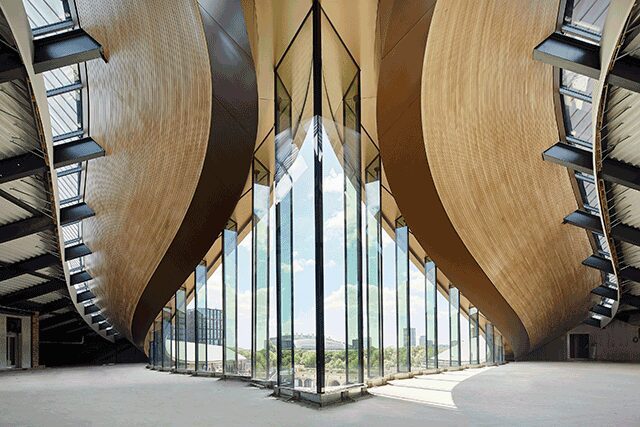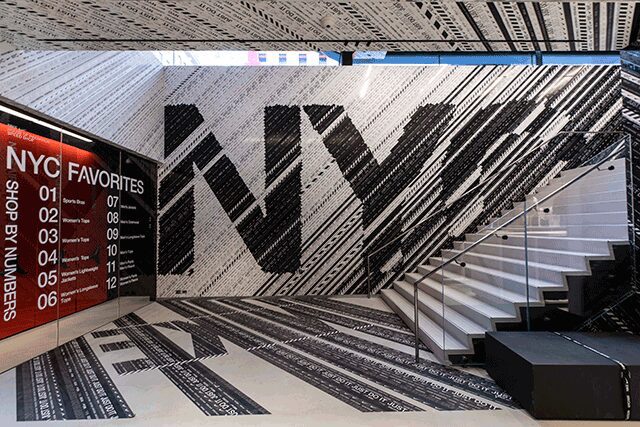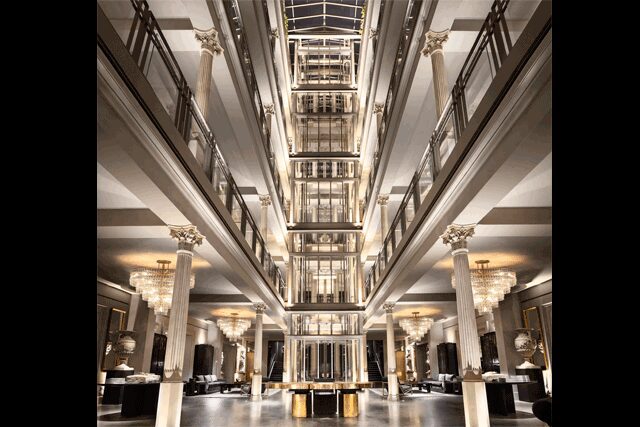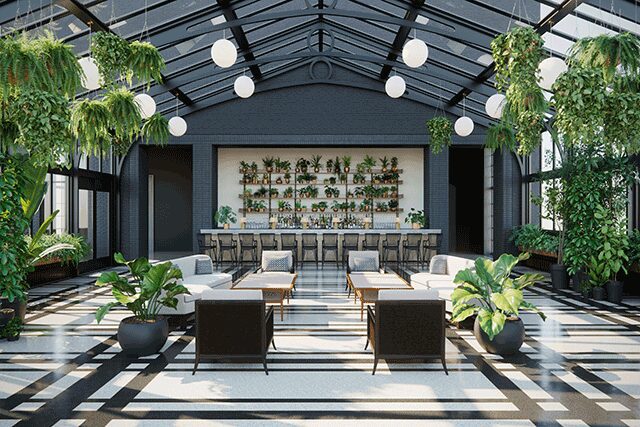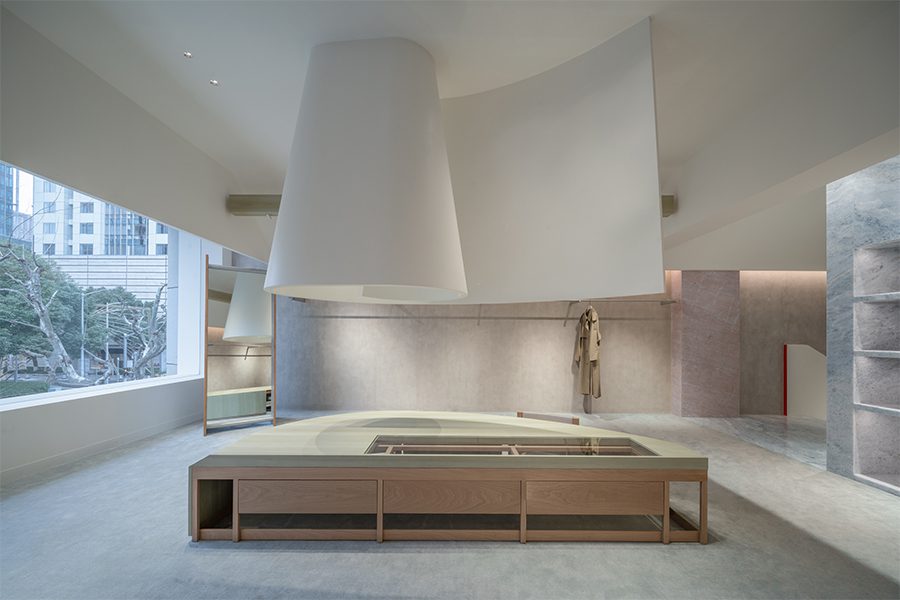Our take: Brick-and-mortar is not dead. In fact, more than 4,000 stores opened in 2017, according to global research firm IHL Group. Retail’s evolution is about experimental and community-building moments. At La Mercerie, for instance, a café inside New York store Roman and Williams Guild, diners can take their plates to go (for a price). Meanwhile, A Ma Maniére’s new boutique in DC houses two luxury apartment suites on its top floor, while Nordstrom Local in Los Angeles forgoes merchandise for styling and tailoring services. It seems well-executed hybrids are the new norm, allowing brands to interact with customers in new, engaging ways.
Coal Drop Yards, London: To rethink the languishing shopping mall, Heatherwick Studio converted a pair of Victorian brick and cast-iron warehouses in London’s King’s Cross area into the decidedly modern Coal Drop Yards shopping district. “We created a place that offers more than just shopping—a place where people want to spend time,” says architect Tamsin Green, project leader at the local firm, which arranged the stores and restaurants across two stories on both sides of the complex. It’s about design, but it’s also about activating the space in the future.” The driving force are the sinuous, gabled roofs that merge at the heart of the complex, which encourage people to gather below for special events.
Nike House of Innovation 000, New York: Experiential retail peaks with Nike’s newest “responsive” flagship in Midtown Manhattan. The six-story, 68,000-square-foot store puts the customer in control with extensive customization labs and a new app that lets patrons “shop the look” from display mannequins. Led by Nike senior creative director of global store design Andy Thaemert, the design boasts recycled flooring made using off-cuts from Nike’s cleat factory and a raw steel and glass façade with a ripple effect that nods to the famous swoosh. “We’re going to learn and change with this retail space as it matures. Everything is mobile and highly flexible,” he says. “It will evolve as we evolve.”
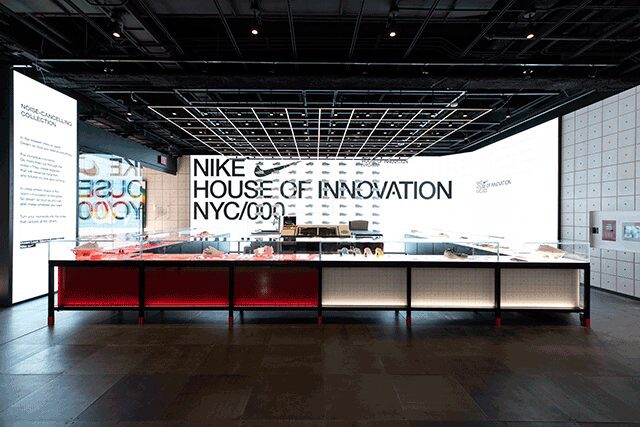
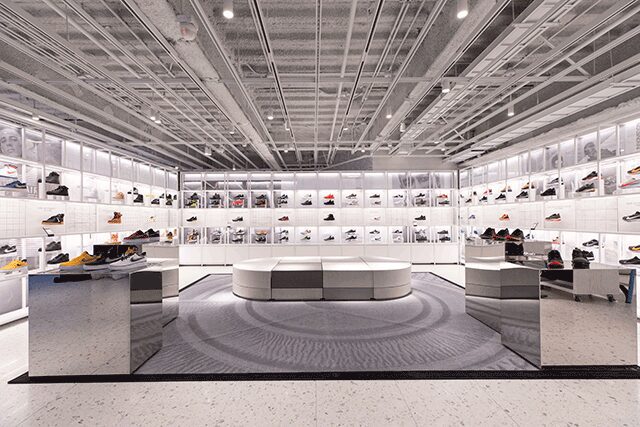
RH New York, the Gallery: The sprawling 90,000-square-foot brick, glass, and steel structure, part of a historic landmark preserved by California-based firm Backen & Gillam Architects, marks the brand’s most robust foray into hospitality. Three F&B spaces (including the glass-enclosed rooftop restaurant from Hogsalt founder Brendan Sodikoff, which offers heady Manhattan views) are spread across six levels surrounding a central atrium devoted to each of RH’s lines and new in-house interior design firm. Customers are either whisked up a striking glass elevator or can take the stairs where artist Alison Berger’s installation of 120 handblown crystal pendants cascades from the ceiling. “We set out to create spaces that were more home than store,” says RH chairman and CEO Gary Friedman. “When we have someone to our home, we are usually hospitable, and when we serve them food and drinks, they stay longer and are full and happy.”
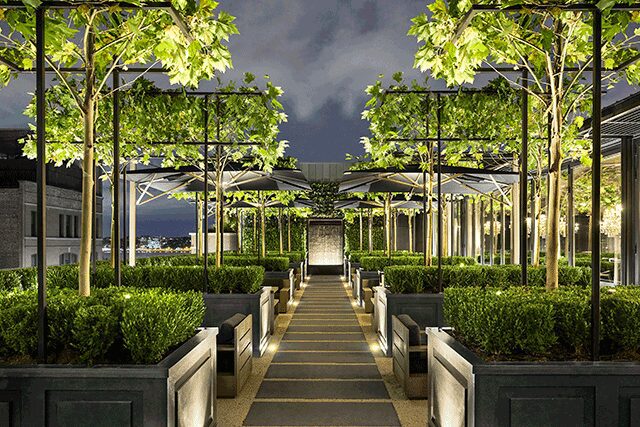
Shinola Hotel, Detroit: “From the time we started opening our retail stores, we always had the idea of creating an environment where people could fully immerse themselves in our brand,” says Daniel Caudill, creative director for Shinola. That comes true this winter when the luxury goods brand takes retail to a new level with the opening of its namesake hotel as a hub for Detroiters and visitors to socialize and become acquainted with the burgeoning city it calls home. The 129 guestrooms and 16,000 square feet of retail and F&B space (overseen by Andrew Carmellini’s NoHo Hospitality Group) will span two historic buildings meticulously restored by local architecture firm Kraemer Design Group. Expect a private club-inspired feel, with rich wood, oil-rubbed bronze, and leather and mohair united by a palette of caramel, blush, gray, and deep green devised by New York-based Gachot Studios. Custom furniture, wallcoverings, and accessories will showcase local and U.S. talent, including a marbleized wallpaper that resembles marble found in one of the buildings. Rooms will be filled with some of Shinola’s most beloved offerings, as well as newly created hotel-specific products. Art, too, is a key element, with an energetic insallation of woven panels covering the walls at reception by a Detroit artist.



